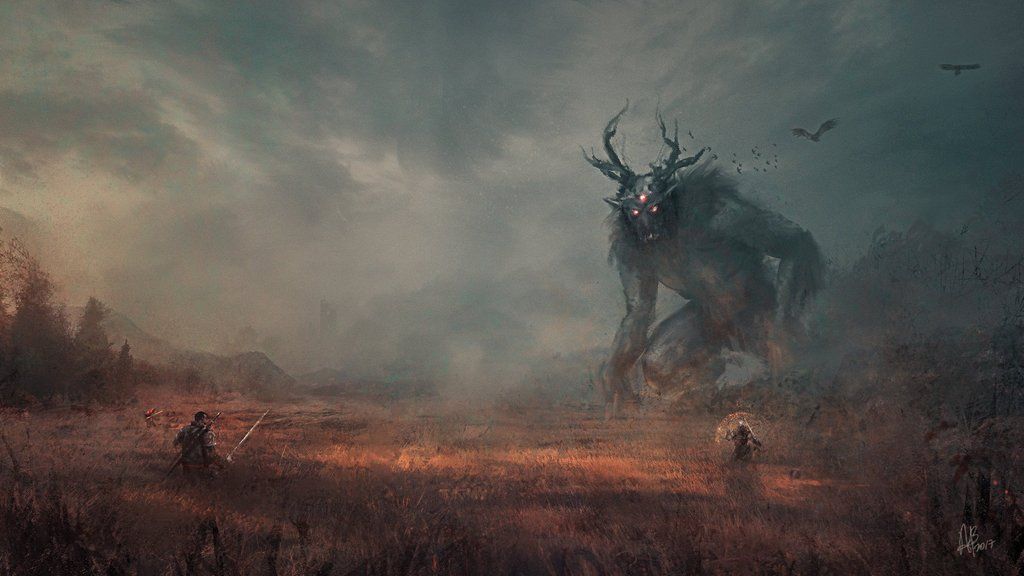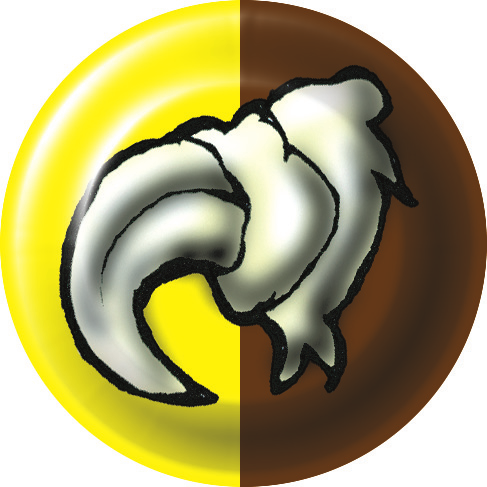Religious Practices
Forms of worship reflect the individualism of the practitioners. The orders celebrate masses in such vastly different ways that they hardly seem part of the same church. Services occur at various times of day or night, on different days of the month, and restrict attendance in distinct, often arbitrary ways. For example, the Order of the Yellow Hand allows anyone who wishes to attend their ceremonies, including adherents of other gods, providing they are of peaceful intent. On the other hand, the Order of Tuarbalt the Golden Limbed, allow only clergy at its ceremonies.
Lay adherents often carry Ilviran icons. These are often made and blessed by clerics, although this is not deemed essential. Common icons include the “Sundered Claw,” the serpent, and the Ivashu. In Ilviran homes, icons are normally placed in small alcoves. In regions where worship of Ilvir is unpopular or discouraged, the icons are hidden or disguised.
A few features are common to most services. A sermon, often in the form of an allegoric tale or song, is traditional. There is a prayer, the content and imagery varying with the order’s beliefs. This is followed by a lengthy period of silence, during which participants meditate upon the tale. The creative bent of the Ilvirans leads them to improvise a great deal. Ceremonies have been known to include animal, human, Ivashu, or other forms of sacrifice, but this does not seem to be an official (or frequent) element. In a few orders, Ivashu play a central role in the rituals involving the higher clergy.
Many of the allegorical sermons and lessons by Ilviran clerics use Ivashu as object lessons. One commonly told tale is that of the Nohah, Sehra-Tu-Yalah. The tale is not regarded as true and is used purely for its emotional and educational content.
Symbols and Regalia
Ilvir is most commonly symbolized by a sundered claw. The origin of this device is ambiguous. Some say that, following the ancient duel between
Agrik and
Larani, Ilvir recovered
Agrik’s severed claws and that it is from these that he made his creatures, but the belief that the Ivashu are made from portions of Ilvir’s own body is at least as common.
Variations on Ilvir’s preferred form, that of the serpent, are as common as the claw. The abilities to coil and change shape are stressed. Abstract whorls and loops figure a great deal in religious ornamentation. The most esoteric symbol is that of the “serpent devouring its children,” a portrayal of a serpent eating its own tail.
An Ilviran High Priest of the Pia-Gardith order. Formal robes vary from order to order, but the colors yellow and brown are most common. Based in Golotha, this is one of the poorest Ilviran orders, reflected in the modest attire. The priest wears a pendant of the Sundered Claw, signifying his office.
The Araksin
The greatest religious festival of the Ilviran church takes place between Yaelah and Yaelmor, in the month of Ilvin. The Araksin is one of few universal practices. Priests fast for the week preceding Araksin. During the two week festival, various original dramatic works and extracts from the Ilviran mythos are performed.
The Pilgrimage
An important practice among Ilvirans is the pilgrimage to
Hârn's
Araka-Kalai. Although few lay adherents can find the time or funds to make the pilgrimage, most clerics make at least one trip in their lives and some some go often.
The Araksin festival is the ideal time to arrive at [Araka-Kalai](location:8007a09e-431c-4851-a452-569d9b5c3a3f). Ilvirans intending to make the journey gather in
Shiran,
Tashál, or
Leriel as much as two or three months prior to the festival. Some consider it to be impious to make the pilgrimage by any means other than walking, although wealthy adherents have been known to make part of the journey by boat across
Lake Benáth. These pilgrims prefer to demonstrate their piety by walking along its northern shore. Since this involves skirting the
Rayésha Mountains in uncertain weather, more than a few have died to prove their points.
Pilgrims usually travel in groups of twenty to thirty for companionship and safety. In 716, a band of twenty pilgrims was ambushed near the
Dêret River by
Agrikan “knights” of the order of the Cohorts of Gashang. The survivors were delivered to an easily surmised fate at the temple of
Agrik in
Shiran. This kind of atrocity has caused some pilgrims to hire mercenaries or to bribe the evil temples to leave them alone.
Burial Customs
Because there are so many different sects in the church of Ilvir, and because rituals vary from one sect to another, there are a wide variety of burial rites. Most Ilvirans prefer burial in earth where their mortal remains can mingle with the cycles of life, death, and rebirth. The ideal is to be buried in the pits below
Araka-Kalai, or as close to there as possible.
There are few Ilviran graveyards or crypts. Ilvirans are quietly buried in the wilderness and, because of their belief in reincarnation, the interment traditionally occurs at dusk and the grave is unmarked. Some Ilvirans abandon their dead in the wilderness for wild animals to consume. A few sects eat their dead, believing this is the ultimate cycle of renewal.











Comments